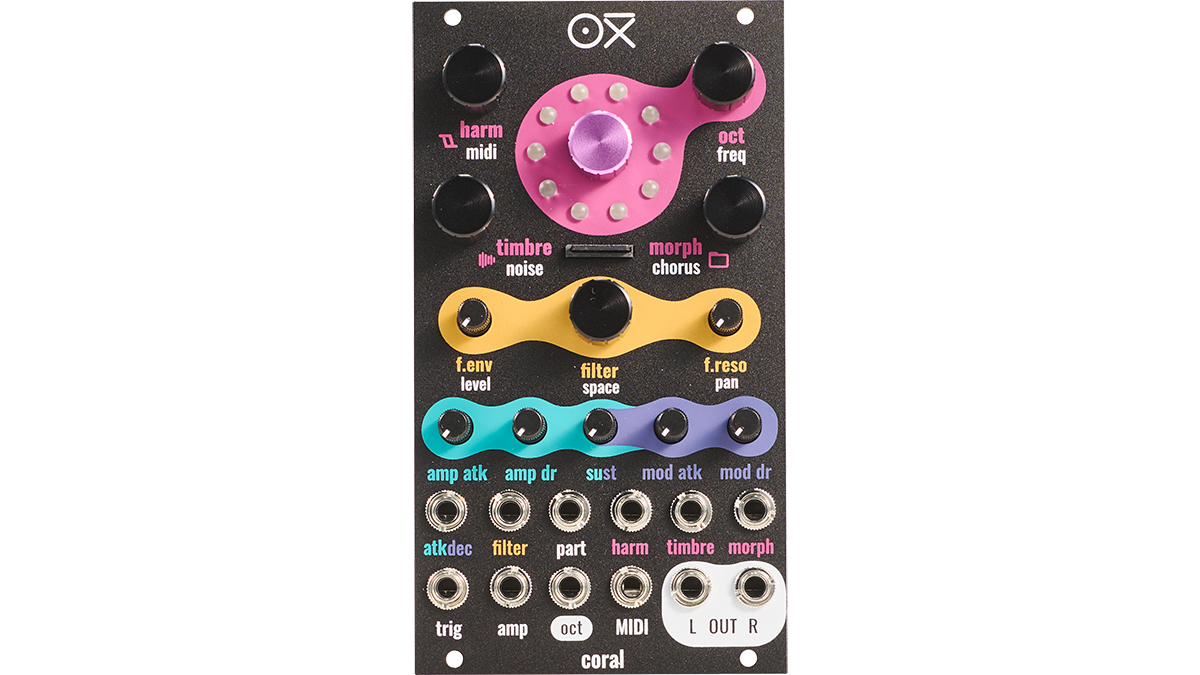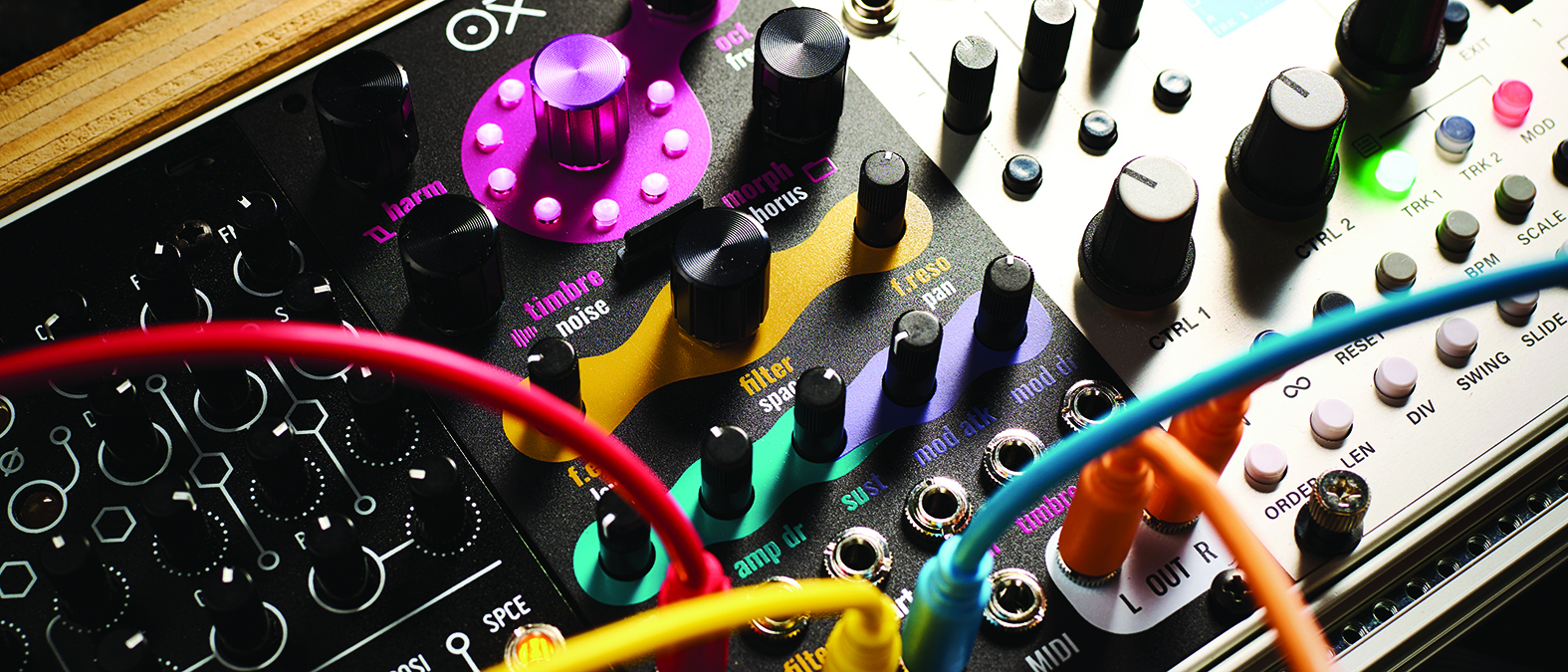MusicRadar Verdict
With the promise of more algorithms in future, Coral could become an indispensable powerhouse for the space conscious.
Pros
- +
Great value for the cost conscious.
- +
More algorithms promised in future updates.
Cons
- -
Fiddly menu-diving, almost a little too compact.
- -
You’ll be tied to the manual for a bit.
- -
Still some bugs in this firmware.
MusicRadar's got your back
OXI Instruments Coral: What is it?
Oxi Instruments Coral is an eight-voice, 10-part multitimbral synth in just 14HP. On paper, that’s a lot of power in such a small space and with no visible menu or screen to guide you along the way, we were intrigued to see how the Spanish developer has interpreted something that 40 years ago would’ve been big enough to eat your dinner off.
Coral is the latest in a long line of modules and synths that have interpreted Mutable Instruments’ modules. With Plaits, the successor of the modern classic, Braids, being the inspiration here. Each voice has an independent filter, envelopes, amp and FX. There are 10 sound engines onboard, including virtual analogue, FM, wavetable, waveshaping, MDO, string, hi-hat, snare, kick and a wav player, with more algorithms planned for the future. All of these can be shaped by four parameters; Timbre, Harmonics, Oct and Morph, which surround a central encoder.

OXI Instruments Coral: Performance and verdict
Located directly underneath the big purple knob is a micros-SD card where you’ll be able to store wavs and wavetables. Below the purple section is the low-pass filter with enveloping, cutoff and resonance controls. Both the voice and filter controls feature secondary options that can be accessed by pressing and holding the main encoder. This second feature set also includes noise, chorus, panning, level, reverb, fine-tuning and the all-important MIDI feature.
Under the filter section are amp and modulation envelope controls, with the remaining space taken up by I/O for CV, MIDI control and audio out. Coral can turn its hand to either running as an eight-voice polyphonic synth or as a multi-part groovebox by assigning different voices to different MIDI channels.
To do this, you need to press and hold the encoder to access the MIDI functionality and this is where things get a bit tricky. Firstly, you need to consult the manual (a lot) while groking how info is displayed using the 10 LEDs. Secondly, while holding down the encoder you’ll find that your hand will obscure said LEDs and you may get lost. While using an encoder to dive into different modes is useful, as a modifier we feel that a separate shift button would’ve been better here. That said, once you’re more familiar with it, you won’t bemoan the lack of a screen and menu for long. It’s fiddly, yes, but not unusable.
While having a whole MIDI-controllable synth in one module sort of flies against the basics of modular, such power within such a small footprint is very useful for systems of all sizes. For the ardent CV user, however, all is not lost. Coral can run eight voices in unison or polyphonically, allocating a new engine for every subsequent note.
Sometimes Coral can feel too big for its boots, especially whilst learning the menu structure, but we love the sonic possibilities at your fingertips. While running as a groovebox in just 14HP has its uses, we found the most fun was to be had creating complex multi-part patches.
MusicRadar verdict: With the promise of more algorithms in future, Coral could become an indispensable powerhouse for the space conscious.
OXI Instruments Coral: The web says
"An amazing source of sound in a small space. It works well as a MIDI synthesizer, giving you a lot of choices, and a workable synth architecture while having some well‑thought‑out CV patchability."
Sound On Sound
OXI Instruments Coral: Hands-on demos
OXI Instruments
Molten Music Technology
OoraMusic
Robots Are Red
OXI Instruments Coral: Specifications
- KEY FEATURES: Eight-voice polyphonic, 10-part multitimbral synth.
- DIMENSIONS: 14 HP, 3 cm deep.
- CONSUMPTION: +12V - 110 mA, -12V - 10 mA, +5V - 0 mA.
- OUTPUTS: 2 x Mono DC coupled outputs (±5 V).
- INPUTS: 1 x MIDI TRS (Type A and B compatible), 8 x CV inputs ±5 V (±10V max), 1 x Gate input.
- CONTACT: OXI Instruments

I take care of the reviews on MusicRadar and Future Music magazine, though can sometimes be spotted in front of a camera talking little sense in the presence of real musicians. For the past 30 years, I have been unable to decide on which instrument to master, so haven't bothered. Currently, a lover of all things high-gain in the guitar stakes and never one to resist churning out sub-standard funky breaks, the likes of which you'll never hear.
“I feel like that song had everything we needed to come back with”: Bring Me The Horizon’s Lee Malia on Shadow Moses, its riff and the secrets behind its tone, and why it was the right anthem at the right time
“I said, ‘Are we sure we can write a song about death?’”: The story of Mike + The Mechanics' classic No.1 The Living Years
“Without investment in music education our talent pipeline is at risk of drying up along with the huge opportunities for economic growth it brings”: UK Music draws up five point plan to “turbocharge” music education










